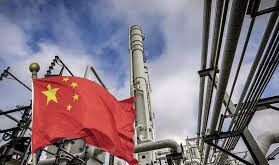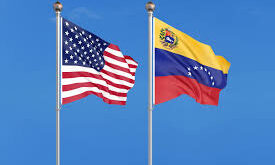Key OPEC+ ministers will convene online Sept. 17 in the face of stalling global oil demand, patchy compliance with output cuts, and Libya’s potential return to the market after a month-long blockade that shut down almost all of its crude production.
But despite frustration among members that oil prices have failed to rise as much as hoped, delegates say the OPEC+ alliance is unlikely to reintroduce deeper cuts to buttress the oil market’s comeback from the coronavirus pandemic.
Already-slipping compliance among some members would make imposing any tighter quotas more difficult, and talks among the nine-country Joint Ministerial Monitoring Committee, co-chaired by the alliance’s biggest members Saudi Arabia and Russia, are instead likely to focus on shoring up discipline, they added.
OPEC and its nine allies achieved 101% of their pledged 7.7 million b/d cuts in August, according to delegates, but not all members shared the burden equally.
The UAE has emerged as a potential flashpoint, with its traditionally strong compliance blemished by what its energy minister has already confessed is a 100,000 b/d breaching of its quota in August.
Nigeria also has work to do to bring its production down in line with its quota, as do a handful of other countries.
And while Iraq was in full compliance in August, it has said it will likely need more time to implement the so-called compensation cuts — due by the end of September — that the OPEC+ deal requires for pumping above its quota in previous months.
Saudi Arabia, which has declared its tolerance for OPEC+ free riders over, has cracked the whip on compliance over the last few months, pressuring recalcitrant members, both privately and publicly, to improve their performance.
But oil prices have been mired between $40-$45/b since June, far below what many countries have budgeted for, and the global economy is still encountering headwinds in controlling the coronavirus impact. The 7.7 million b/d in collective cuts are scheduled to remain in place through the end of 2020, after which they will ease to 5.8 million b/d for 2021 and the first quarter of 2022.
Saudi energy minister Prince Abdulaziz bin Salman will have to tread a fine line in enforcing compliance, while not upsetting members too much, particularly with close ally UAE undermining his pressure campaign, one delegate said on condition of anonymity.
“The Saudis are going to push them to comply, [but] there are a lot of angry countries,” the delegate said.
Another delegate said he expects the talks over compliance and future compensation cuts to be “complicated.”
Gloomy forecasts
The JMMC is tasked with monitoring market conditions, tracking member compliance and recommending any changes to the OPEC+ deal, if needed.
Its meeting comes as the International Energy Agency, the US Energy Information Administration and OPEC itself have downgraded their global oil demand forecasts, seeing a much weaker recovery.
In its latest monthly oil market report on Sept. 14, OPEC projected that 2020 oil demand would come in 400,000 b/d lower than it had predicted in August, while 2021 was revised down by about 770,000 b/d.
“From the OPEC monthly outlook, you can easily make [out] that demand will not come back,” a third delegate said. “The concern will be the pace of demand growth until it is back.”
On the supply side, US production could rebound faster than previously expected, the OPEC report stated, while Libya could be a wildcard in the months ahead.
Rebel militia leader Khalifa Haftar has said his Libyan National Army could drop an oil blockade of the country’s ports, in place since January, that has caused about 1 million b/d of its crude production to be shut in.
The LNA in August agreed to a ceasefire with the UN-backed Government of National Accord, though state-owned National Oil Corp. has yet to lift a force majeure on crude exports.
Any return of Libyan barrels would make the OPEC+ coalition’s market rebalancing job more challenging, at a time when it is already grappling with how to manage struggling global oil demand
Tags Organization of the Petroleum Exporting Countries (OPEC) Platts
Check Also
Equinor Makes Two Large Gas Discoveries in Norway’s North Sea
Equinor announced on Friday two gas and condensate discoveries in the Norwegian part of the …
 Iran Energy News Oil, Gas, Petrochemical and Energy Field Specialized Channel
Iran Energy News Oil, Gas, Petrochemical and Energy Field Specialized Channel



